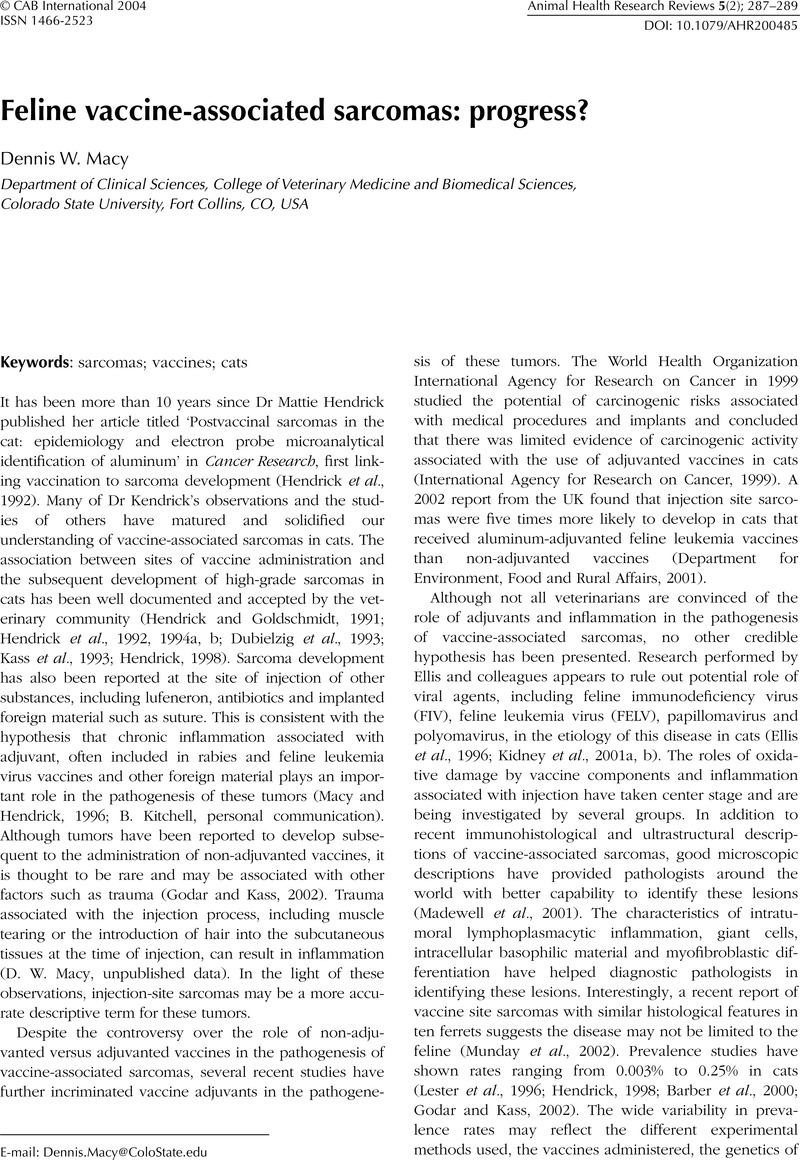Crossref Citations
This article has been cited by the following publications. This list is generated based on data provided by Crossref.
2008.
Letters to the Editor.
Journal of the American Veterinary Medical Association,
Vol. 233,
Issue. 9,
p.
1393.
Thomas, Rachael
Valli, Victor E.
Ellis, Peter
Bell, Jerold
Karlsson, Elinor K.
Cullen, John
Lindblad-Toh, Kerstin
Langford, Cordelia F.
and
Breen, Matthew
2009.
Microarray-based cytogenetic profiling reveals recurrent and subtype-associated genomic copy number aberrations in feline sarcomas.
Chromosome Research,
Vol. 17,
Issue. 8,
p.
987.
Woodward, K. N.
and
Toon, L. A.
2009.
Veterinary Pharmacovigilance.
p.
453.
Zardo, Karen Maciel
Damiani, Lucas Petri
Matera, Julia Maria
and
Fonseca-Pinto, Ana Carolina Brandão de Campos
2016.
Recurrent and non-recurrent feline injection-site sarcoma: computed tomographic and ultrasonographic findings.
Journal of Feline Medicine and Surgery,
Vol. 18,
Issue. 10,
p.
773.
Kass, Philip H.
2018.
Prevention of Feline Injection-Site Sarcomas.
Veterinary Clinics of North America: Small Animal Practice,
Vol. 48,
Issue. 2,
p.
301.
AbdelMageed, M. A.
Foltopoulou, P.
and
McNiel, E. A.
2018.
Feline vaccine‐associated sarcomagenesis: Is there an inflammation‐independent role for aluminium?.
Veterinary and Comparative Oncology,
Vol. 16,
Issue. 1,



